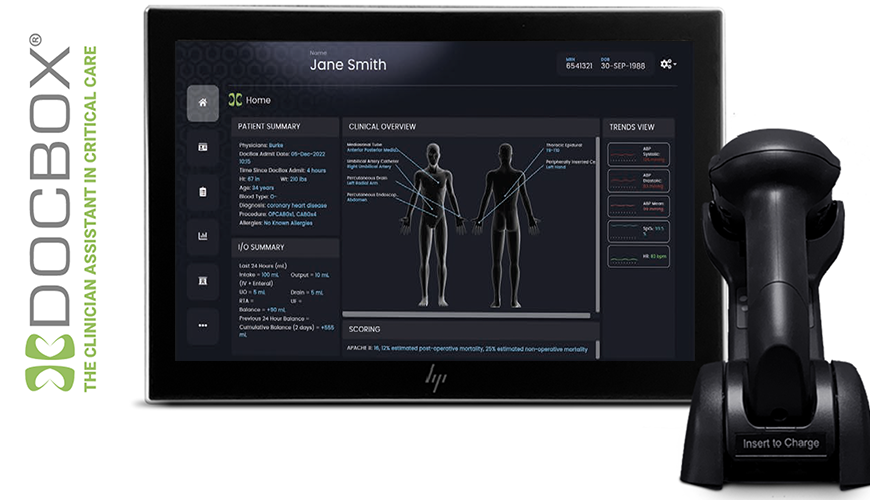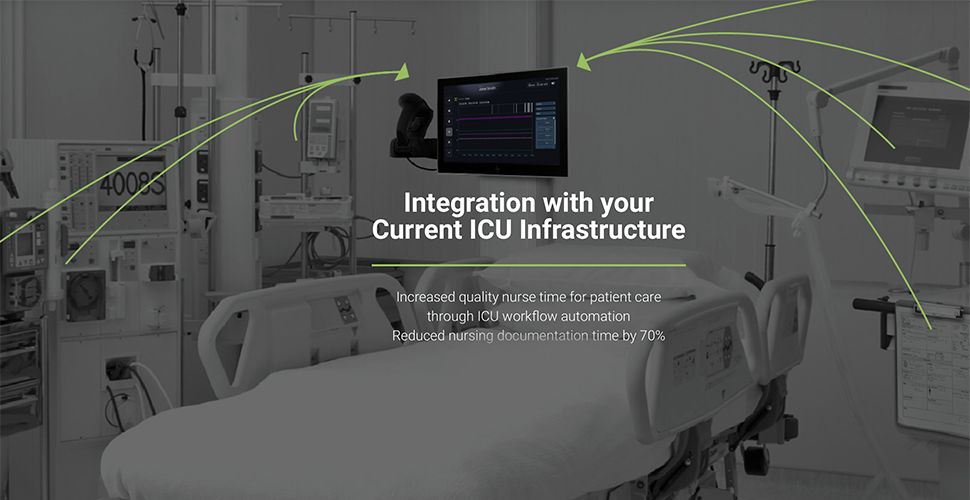DocBox IoT for the ICU - Case Study
DocBox partners with Smilefish to deploy remote access to ICU IoT solution via AWS

Executive Summary
DocBox is dedicated to achieving better patient outcomes through fully integrated IoT solutions in the ICU. Providing the Clinician's Assistant in Critical Care, DocBox empowers ICU physicians and nurses by connecting medical devices to its vendor-neutral medical IoT platform. Through ICU workflow automation and automatic data collection, DocBox frees nurses' time from manual and error-prone data entry, allowing more time for quality patient care. Additionally, it enables hospitals to automatically capture revenue-generating activities with less burden on the ICU staff. DocBox collects approximately 2GB of data per day per bedside in the ICU, making the data available to the provider on-premises or through the cloud.
Problem Statement:
DocBox initially developed its Clinical Assistant as a monolithic desktop application dependent on licensed technology. However, new requirements suggest migrating the user interface to open-source web-based technology. This migration would provide various benefits, such as support for a broader range of devices, simplified globalization support, and a faster agile release cycle. Separating the user interface and application layer via web technology would also enable virtualization capabilities to non-hospital care environments such as hospitals at home and during patient transport with requirements such as remote viewing and, eventually, remote control.

Vendor Selection:
Smilefish's Data Fabric architecture, which supports hybrid multi-cloud environments and connects on-premises services with cloud deployment, had significant similarities with DocBox's desired architecture. Smilefish's experience connecting cloud-based data fabric solutions with templated mobile and web applications made them an excellent fit for DocBox's architecture enhancements. Smilefish also had experience in healthcare-specific software development requirements, including HIPAA regulations, and meeting security and durability requirements for hybrid multi-cloud solutions in regulated verticals. Additionally, Smilefish had experience in release management and supporting global rollout, making them a valuable partner for DocBox.
Partnership
Smilefish values collaboration with their clients' development teams and strives to build trust through coaching, collaboration, and knowledge sharing. They prioritize helping their clients grow and become self-sufficient rather than creating dependency. Thanks to a pre-existing open-source code base, Smilefish and DocBox could collaborate effectively and develop a proof-of-concept and fully functional MVP solution. By enabling web technology and bridging the gap in the cloud, medical teams, developers, and partners could collaborate in an interactive and hands-on fashion.
Replacing the monolithic compiled C++ bedside application with open-source web technology allowed for a faster agile development process and feature development cycle that would take weeks would turn into days. Enhancements that took days became available for QA within hours. This allowed DocBox to systematically apply its standardized data model, which further shortened the development cycle and opened the bedside product for a broader range of medical devices providing homogenous data that can ultimately be used for machine learning and standardized AI models. "Normalizing the data across medical devices is essential to the utilization of medical device data to create and deploy machine learning and AI across healthcare," said Tracy Rausch, Founder DocBox. Last but not least, the team developed real-time visualization for medical device waveform data that prepared the bedside applications to move from nurse-level documentation to physicians level diagnostic capabilities.
Implementation in the AWS Cloud:
Selecting AWS for the POC and MVP phases allowed Smilefish to quickly present functional solutions across DocBox's internal team and partner network. This work also prepared for DocBox's need to support a hybrid multi-cloud environment and is similar to Smilefish's Data Fabric architecture:
- A fast RDS Postgres database hosting user bedside, user management, and configuration parameters meet compatibility requirements with the existing DocBox bedside and on-premises data infrastructure.
- Deploying data services on AWS EC2 allowed for maximum compatibility with local deployment.
- The AWS Simple Notification Service (SNS) is integrated in the web services .
- The native analytics dashboards are supported by Smilefish Data Fabric APIs that utilize AWS RDS queries. Additionally, these APIs allow for self-service analytics (i.e., Tableau and Looker)
- AWS CloudWatch monitors the system's health and notifies admin users via AWS SNS should manual interference be needed.
Relying entirely on open-source technology allowed Smilefish and DocBox to migrate the solution to the Google Cloud Platform (GCP) for production without encountering any blocking issues. This highlights the flexibility and compatibility of the solution with different cloud platforms, enabling a smooth transition to the desired production environment.
Outcome:
The solution surpassed the initial requirements, resulting in several follow-on contracts from both commercial and government entities. The implementation of web enablement played a crucial role in enhancing DocBox's platform capabilities and was instrumental in expediting the global rollout of the solution.
Updates:
MD PnP Presents Remote Control Care Testing and Verification Method (August 23, 2023 MedTech Intelligence).
